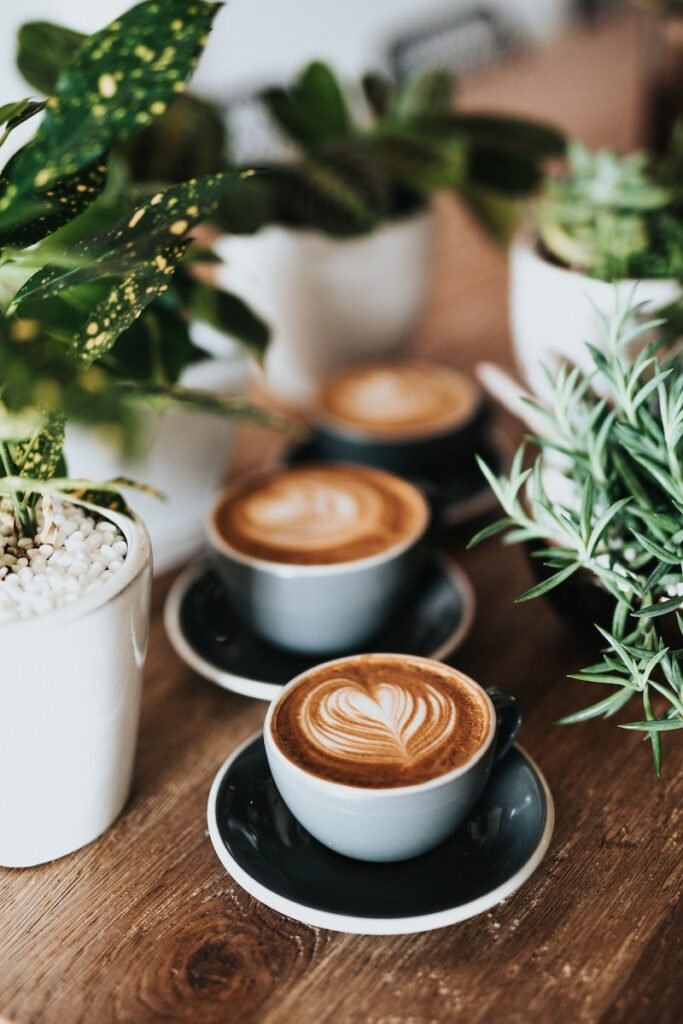Coffee is more than just a morning pick-me-up; it’s an experience. From the aroma to the taste, every cup of coffee holds the potential for maximum enjoyment. Whether you’re a casual coffee drinker or a passionate connoisseur, there are expert tips and techniques that can elevate your coffee experience to new heights. In this article, we will explore key steps, equipment, and methods for brewing the perfect cup of coffee, understanding different types of beans and roasts, choosing the right grinder, and much more. So, grab your favorite mug and get ready to enhance your coffee experience like never before.
Brewing the Perfect Cup: Key Steps and Equipment
Brewing the perfect cup of coffee requires attention to detail and the right equipment. Here are some key steps to follow:
- Start with freshly roasted beans: Choose high-quality, freshly roasted beans for the best flavor.
- Measure and grind your beans correctly: Use a digital scale to measure the coffee-to-water ratio and grind the beans to the appropriate consistency for your brewing method.
- Use clean, filtered water: The quality of water can greatly affect the taste of your coffee. Use filtered water to ensure optimal flavor.
- Control the water temperature: Different brewing methods require different water temperatures. Invest in a thermometer to ensure your water is at the right temperature for brewing.
- Choose the right brewing method: From pour-over to French press, there are various brewing methods to choose from. Experiment with different methods to find your favorite.
- Invest in quality brewing equipment: A good coffee maker, grinder, and other accessories can make a significant difference in the quality of your coffee.
Understanding Coffee Beans: Types, Roasts, and Origins
Coffee beans come in various types, roasts, and origins, each offering a unique flavor profile. Here’s a breakdown of the key aspects to understand:
- Types of coffee beans: The two main types are Arabica and Robusta. Arabica beans are known for their delicate flavor and acidity, while Robusta beans have a stronger, more bitter taste.
- Roast levels: Coffee beans are roasted to different levels – light, medium, and dark. Lighter roasts preserve more of the bean’s original flavors, while darker roasts offer a richer, bolder taste.
- Single-origin vs. blends: Single-origin beans come from a specific region, offering distinct flavors. Blends combine beans from different regions to create unique flavor profiles.
- Consider acidity and body: Acidity refers to the brightness or tanginess of the coffee, while body refers to its richness and heaviness. Experiment with different beans to find your preferred balance.
Grinding for Greatness: Choosing and Using the Right Grinder
Grinding your coffee beans just before brewing is essential for maximum flavor. Here’s what you need to know about choosing and using the right grinder:
- Burr vs. blade grinders: Burr grinders are preferred by coffee enthusiasts as they provide a more consistent grind size. Blade grinders, although more affordable, can result in uneven grind.
- Adjusting the grind size: Different brewing methods require different grind sizes. For example, a coarse grind is suitable for French press, while a fine grind is needed for espresso.
- Grind only what you need: To maintain freshness, grind only the amount of coffee you plan to use immediately. This prevents the beans from losing their flavor.
Water Matters: How to Ensure Optimal Coffee Quality
Water quality is often overlooked, but it plays a crucial role in the taste of your coffee. Consider the following tips to ensure optimal coffee quality:
- Use filtered water: Tap water can contain impurities that affect the taste of your coffee. Invest in a water filter or use bottled water for the best results.
- Temperature control: The ideal water temperature for brewing coffee is between 195°F and 205°F (90°C and 96°C). Use a thermometer to monitor and adjust the temperature if necessary.
- Avoid using distilled or softened water: These types of water can result in a flat taste as they lack the minerals present in natural water.
Mastering the Pour-over Method: Step-by-Step Guide
The pour-over method allows for greater control over the brewing process, resulting in a clean and flavorful cup of coffee. Here’s a step-by-step guide:
- Preheat your equipment: Rinse the paper filter with hot water and preheat your pour-over device and cup.
- Measure and grind your coffee: Use a digital scale to measure the coffee-to-water ratio and grind the beans to a medium consistency.
- Bloom the coffee: Pour a small amount of water over the coffee grounds and let it sit for 30 seconds. This allows the coffee to bloom and release its flavors.
- Start the pour: Begin pouring water slowly and steadily in a circular motion, starting from the center and moving outward. Aim to maintain a steady flow rate.
- Maintain the water level: Keep the water level in the pour-over device consistent by pouring in small increments.
- Allow the coffee to finish dripping: Once all the water has passed through the coffee grounds, remove the pour-over device and enjoy your freshly brewed coffee.
Exploring Espresso: Techniques for Rich and Balanced Flavors
Espresso is a concentrated form of coffee known for its rich and balanced flavors. Here are some techniques to enhance your espresso experience:
- Use freshly roasted beans: Espresso requires high-quality, freshly roasted beans to bring out its full potential.
- Grind the beans finely: The grind size for espresso is much finer than other brewing methods. Aim for a consistency similar to powdered sugar.
- Tamp with the right pressure: Tamping is the process of compressing the coffee grounds in the portafilter. Apply consistent pressure to ensure an even extraction.
- Monitor the extraction time: The ideal extraction time for espresso is around 25 to 30 seconds. Adjust the grind size or tamping pressure to achieve this timeframe.
The Science of Steeping: Unleashing the Power of French Press
The French press method allows for a full-bodied and robust cup of coffee. Here’s how to unleash the power of steeping:
- Use a coarse grind: French press requires a coarse grind to prevent the coffee grounds from passing through the filter.
- Preheat the French press: Pour hot water into the French press to preheat it and then discard the water.
- Measure and add coffee: Use a digital scale to measure the coffee-to-water ratio and add the desired amount of coffee to the French press.
- Pour in hot water: Pour hot water over the coffee grounds, ensuring all the grounds are fully saturated.
- Steep and plunge: Let the coffee steep for 4 to 5 minutes, then slowly and steadily press the plunger down to separate the grounds from the liquid.
- Pour and enjoy: Pour the freshly brewed coffee into your cup, leaving any remaining liquid in the French press to avoid over-extraction.
Dive into Cold Brew: Unlocking Refreshing Coffee Creations
Cold brew coffee offers a smooth and refreshing alternative to hot coffee. Here’s how to unlock its full potential:
- Use coarse ground coffee: Cold brew requires a coarse grind to extract the flavors without bitterness.
- Choose the right ratio: A common ratio for cold brew is 1 part coffee to 4 parts water. Adjust the ratio based on your preferences.
- Combine coffee and water: Add the ground coffee and cold water to a jar or pitcher, stirring gently to ensure all the coffee is saturated.
- Steep in the refrigerator: Place the jar or pitcher in the refrigerator and let it steep for 12 to 24 hours.
- Filter and serve: Use a fine-mesh sieve or a coffee filter to separate the liquid from the coffee grounds. Serve the cold brew over ice and add milk or sweeteners if desired.
Milk Magic: Achieving the Perfect Froth and Texture
Milk can elevate your coffee experience by adding creaminess and complexity. Here’s how to achieve the perfect froth and texture:
- Choose the right milk: Whole milk, 2% milk, or non-dairy alternatives like oat or almond milk work well for frothing.
- Cold milk and a clean frothing pitcher: Start with cold milk and ensure the frothing pitcher is clean to achieve the best results.
- Froth with a steam wand or handheld frother: If your espresso machine has a steam wand, use it to froth the milk. Otherwise, use a handheld frother.
- Technique and timing: Position the steam wand or frother just below the surface of the milk, tilting the pitcher slightly. Froth until the milk reaches the desired texture and temperature.
- Swirl and tap: After frothing, swirl the milk to incorporate the foam and tap the pitcher on the counter to remove any large bubbles.
- Pour and enjoy: Pour the frothed milk into your coffee, creating latte art if desired. Enjoy the creamy and velvety texture of your coffee.
Embracing the art of coffee brewing and experimentation can greatly enhance your coffee experience. By following these expert tips and techniques, you’ll be able to brew the perfect cup of coffee, explore different flavors and origins, and elevate your coffee to new heights. Remember, the joy of coffee lies not only in savoring the taste but also in the process of creating it. So, take your time, enjoy the journey, and savor every sip of your perfectly brewed coffee.


